Benefits of Dethatching and Overseeding Your Lawn
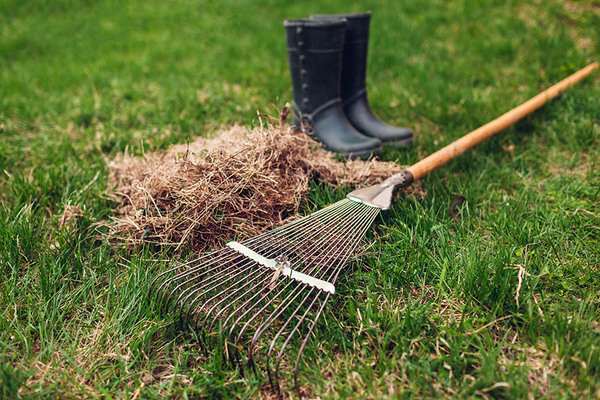
Introduction
A healthy, vibrant lawn is the pride of any homeowner, but maintaining it requires more than just regular mowing and watering. If your lawn feels spongy or bouncy underfoot, or if you notice weak, thin growth or a pale color in some areas, these could be signs that your lawn needs dethatching. Dethatching and overseeding are crucial practices for maintaining a lush, green lawn. This guide will help you understand when and how to perform these tasks effectively.
What Is Thatch?
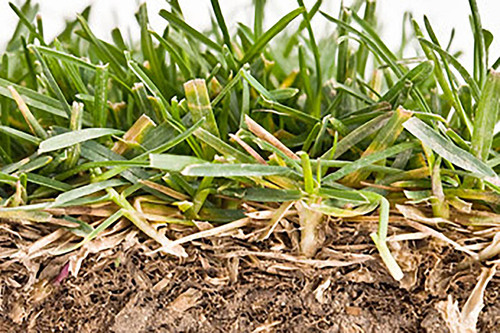
A Close-up of Grass, Thatch, and Soil
Understanding the Thatch Layer
Thatch is a layer of dried vegetation underneath the green vegetation of your lawn. It consists of old grass roots, rhizomes, and other organic materials that haven’t fully decomposed. Contrary to popular belief, thatch doesn’t come from grass clippings left on your lawn. In fact, grass clippings can actually help reduce thatch by promoting the decomposition of organic material.
A thin layer of thatch—less than half an inch—is beneficial for your lawn. This layer acts like mulch, helping to retain moisture, insulating plant crowns from temperature fluctuations, and allowing water, nutrients, and air to reach the roots. However, when the thatch layer becomes too thick, it can cause problems. Thatch thicker than half an inch can prevent water, nutrients, and air from reaching the soil, leading to shallow root growth, increased vulnerability to drought, and a higher risk of pests and diseases.
Causes of Excessive Thatch
Excessive thatch buildup can occur when the natural decomposition process is obstructed. Factors like compacted soil, poor microbial activity, heavy use of high-nitrogen fertilizers, and improper lawn maintenance practices can all contribute to the accumulation of thatch. Additionally, a layer of leaves or pine needles left on the lawn can prevent proper decomposition, leading to a thicker thatch layer over time.
Is It Time to Dethatch?
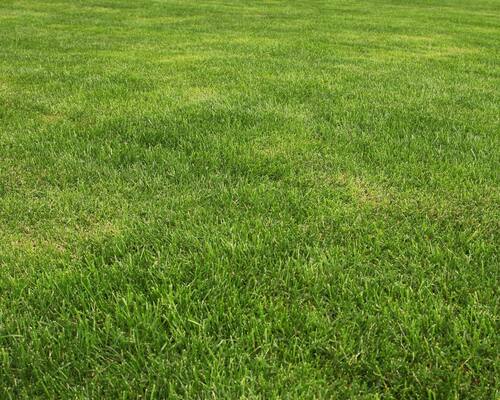
A Healthy-looking Green Lawn
How to Determine If Your Lawn Needs Dethatching
Dethatching involves breaking up the thick layer of organic matter to allow your lawn to breathe and absorb nutrients more effectively. But how can you tell if your lawn needs dethatching?
Start by performing a simple test. Use a trowel or small spade to cut out a small square or circular section of your lawn about three inches wide by five inches deep. Examine the cross-section of soil and grass you’ve removed. The thatch layer is easy to identify by its yellowed, stringy appearance. If this layer is more than half an inch thick, it’s time to dethatch.
Methods of Dethatching
For the most consistent and efficient results, consider hiring a professional lawn care service, especially if the thatch layer is more than two inches thick. Professionals have the tools and expertise to dethatch your lawn without causing unnecessary damage.
When to Overseed?
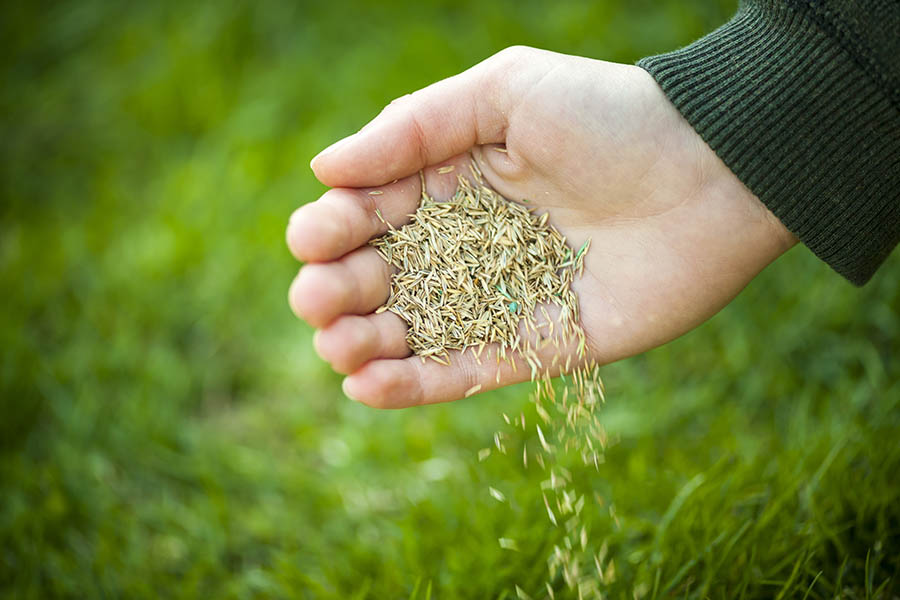
A Handful of Grass Seeds is Dispersed
The Importance for Overseeding
Overseeding is the process of planting new grass seed directly into existing turf without removing the old grass. This practice is particularly beneficial after dethatching, as it helps fill in any bare patches and promotes a thicker, more resilient lawn.
Overseeding is also an effective way to introduce modern grass varieties that are more resistant to insects, diseases, and drought. These newer varieties typically require less water, less fertilizer, and fewer pesticides, making them a more sustainable choice for your lawn.
Preparing for Overseeding
Before overseeding, it’s essential to address any underlying issues that could affect the success of your new grass. Problems like compacted soil, poor drainage, insufficient air circulation, low soil pH, and inadequate sunlight exposure can all hinder grass growth. If these issues aren’t resolved, even the best-quality grass seed may struggle to establish itself and thrive.
To prepare your lawn for overseeding:
- Aerate the Soil: Aeration helps to alleviate soil compaction, improve drainage, and enhance root growth. This process involves removing small plugs of soil from your lawn to create spaces for air, water, and nutrients to penetrate the soil.
- Test and Adjust Soil pH: Grass grows best in soil with a pH between 6.0 and 7.0. Conduct a soil test to determine your soil’s pH and make any necessary adjustments using lime or sulfur.
- Improve Drainage and Air Circulation: If your lawn has poor drainage or limited air circulation, consider making changes to improve these conditions. This could include installing drainage systems, pruning trees and shrubs, or regrading your lawn.
- Choose the Right Grass Seed: Select a high-quality grass seed that is suited to your region’s climate and your lawn’s specific needs. Consider factors like shade tolerance, drought resistance, and the type of use your lawn will experience.
Keeping Your Lawn Healthy Year After Year
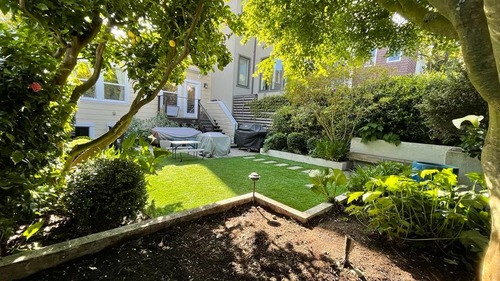
A Well-Maintained Urban Lawn
Maintaining a Beautiful Lawn
Regular lawn care, including dethatching and overseeding, is key to maintaining a healthy, beautiful lawn. By staying vigilant for signs of stress, such as spongy grass or thin patches, you can address issues before they become major problems. In the greater San Francisco Bay Area, if your lawn needs dethatching or overseeding, contact a local landscaping or lawn care company. With their professional expertise, you can ensure that your lawn remains lush and green, providing a beautiful backdrop for years of backyard relaxation.
Originally posted March 1, 2021.





